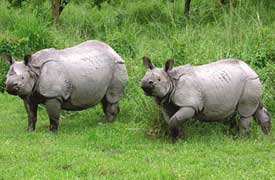A Real Taste of Hyderabad
Hyderabad, the city of Nizams, comes
alive in the month of Ramadan. This year that is 2012, Ramadan will start from
July 20th, which will continue for a month.
In this month of Ramadan, Muslims
throughout the world fast for the whole day. Before the break of dawn,
they have their food and then for the whole day they do not consume anything. They
break their day long fast in the evening at sunset mostly with fruits which is
followed by dinner known as Iftar, comprising of region’s delicacies.
Charminar
Hyderabad is well known for its
heritage, hospitality and different delicacies and in the month of Ramadan
during iftar, every day these delicacies can be bought from different outlets
in the twin city. Or if you become the part of any iftar in the city, you get to
taste different dishes free of cost.
Being in Hyderabad for last 3 years I
get to taste these dishes quite often, but these delicacies taste much better
during Ramadan. The secret behind this I too don’t know. So the best time to visit Hyderabad is in the
month of Ramadan, when you will get the real flavor of Hyderabad.
Hyderabad is a place of
non-vegetarians delight, where you can try different dishes which must not be
missed by anyone who visits the city. They are:
1. Hyderabadi Biryani
2. Nahari
3. Haleem
4. Pathar – Ka – Gosht
5. Double - Ka - Meetha
6. Khubani – Ka – Meetha
7. Seviyon – Ka – Meetha
8. Kheer
The most popular and awesome dish of
Hyderabad is Hyderabadi Biryani, which is eaten and even taken as a parcel for
their dear ones in different parts of India. Cooked in a unique manner, this
biryani is a blend of Mughals with a special cooking style of Nizams, which has
a very different aroma.
There are many variants of biryani
such as Mutton Biryani, Chicken Biryani, Biryani Kham, Biryani Zard and the
most exotic one is Joban Malti Biryani, which is made of mutton, partridges and
quails with rice.
These biryanis are decoratively
garnished with mint leaves, fried onions and boiled eggs. The aroma and
appearance of these biryanis will certainly make your mouth water. These are
served hot with kuchambar or onion raita( made of curd and onion) and mirchi –
ka – salan.
Hyderabadi Biryani
Another delicacy to be tried is
Pathar – Ka – Gosht, which is marinated meat cubes cooked on a hot stone.
Pathar - Ka - Gosht
The most popular and delicious dish
of Hyderabad in the month of Ramadan is Haleem, which is a dish made of minced
meat cooked with butter and ground wheat. Muslims break their fast with this
nutritious and tasty dish. Haleem is so yummy in Hyderabad during Ramadan, that
nothing can beat the taste and flavor of this dish.
Haleem
Another traditional authentic dish of
Hyderabad is Nahari also called as Paya. This is a dish made with goat’s foot,
which is cooked in a spicy soupy shorba. This is mostly taken with hot parathas
or naan in breakfast. Traditionally this dish is served with goat’s tongue and
tender part of the head.
Nahari
After enjoying these hot and tasty
delights of Hyderabad, how come one leave the dining space without any desert
treat, for which too Hyderabad has got the fame. The deserts like double – ka –
meetha, khubani – ka –meetha, seviyan – ka – meetha, and kheer are so
deliciously made that without which the Hyderabadi food is incomplete.
Double – Ka – Meetha is prepared with
bread, milk, sugar, ghee and nuts.
Double – Ka - Meetha
Another
desert is khubani – ka – meetha, which is made of apricot, sugar and lemon
juice. This is garnished with almond and served hot or cold with ice cream or
fresh cream.
Khubani – Ka – Meetha
The
next and very important desert of Muslims, without which no Id is complete, is
seviyan – ka – meetha or seviyan. This sweet dish is prepared of fine fried
vermicelli, boiled in milk with sugar and garnished with dry fruits.
Seviyan
Being
in India, how can I forget to mention about the desert named Kheer, which is
considered to be very auspicious in most of the Indian occasions. This dish is
prepared with rice, milk, and sugar, flavored with cardamom and garnished with
dry fruits.
Kheer
Feeling
hungry? I am sorry I cannot parcel these dishes to you immediately as there is
no home delivery facility for the out station people.
But
you are missing something which I am enjoying, sitting in one of the restaurants
of Hyderabad ….this is so delicious …. yummy yummy.
For tasting all these delicacies you need to
visit Hyderabad, where Nawabi dishes are waiting eagerly for your admiration.
So
if you are having little free time, why don’t you join me, to get the real flavor
of Hyderabad in this auspicious month of Ramadan?
Bye
– Bye!
See
you in Hyderabad soon…
If you want to treat some dear ones with these delicious dishes in Hyderabad, then for more details visit the website @ Hop Around India
If you want to treat some dear ones with these delicious dishes in Hyderabad, then for more details visit the website @ Hop Around India





















